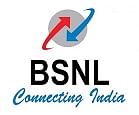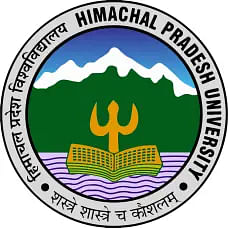
Table of Contents
BSNL Recruitment syllabus 2024 is prescribed by the conducting body. The syllabus for different parts is based on the topics in the diploma or graduate programs completed by the candidates who appear for the exam. It is essential to know the exam syllabus before starting the preparation to obtain high marks and qualify for the recruitment process.
Check the article below for the part-wise syllabus for BSNL Recruitment 2024.
BSNL Recruitment 2024 Exam Syllabus Highlights
BSNL Recruitment 2024 exam syllabus for the different posts is given below.
- Junior Engineers(JE): General Ability Test, Basic Engineering.
- Management Trainee: General Ability Test, Basic Engineering, Specialization subject.
BSNL Recruitment 2024 Exam Syllabus for Part I (General Ability Test)
BSNL Recruitment 2024 Part I will be for 20 marks. The candidate’s comprehension and understanding of General English shall be tested through simple exercises such as the provision of antonyms and synonyms, fill in the blanks and multiple-choice exercise etc.
BSNL Recruitment 2024 Exam Syllabus for Part I (General Ability Test) shall also include questions on current events, general knowledge and such matters of everyday observation and experiences as may be expected of Diploma holder.
BSNL Recruitment 2024 Exam Syllabus for Part II (Basic Engineering)
Part II, which is the Basic Engineering section, for BSNL Recruitment 2024 will be for a total of 90 marks consisting of the following topics and sub-topics.
Applied Mathematics
- Co-ordinate Geometry and Vector Algebra
- Matrix and Determinant
- Differential Calculus
- Integral Calculus
- Differential equation of second order
- Fourier series
- Laplace Transform
- Complex Number
- Partial Differentiation
Applied Physics
- Measurement-Units and Dimension
- Waves, Acoustics, Ultrasonic, light
- Laser and its Application
- Atomic Structure and Energy Levels.
Basic Electricity
- Electrostatics, Coulomb’s law, Electric field, Gauss’s theorem, concept of potential difference
- The concept of capacitance and capacitors
- Ohm’s law, power and energy, Kirchoff’s voltage, current laws and their applications In simple DC circuits, Basic Magnetism
- ElectroMagnetism
- Electromagnetic Induction: Concept of alternating voltage & current
- Cells and Batteries
- Voltage and Current Sources: Thevenin’s theorem, Norton’s theorem, and their applications.
Electronics Devices and Circuits
- Classification of materials into conductor, semiconductor, insulator etc., electrical properties, magnetic materials.
- Various types of relays, switches, and connectors, Conventional representation of electric and electronic circuits elements
- Active and passive components
- Semiconductor Physics; Semiconductor Diode
- Bipolar transistor & their circuits
- Transistor Biasing Stabilization of operating point
- Single stage transistor amplifier
- Field effect transistor, Mosfet circuits applications
- Multistage Transistor Amplifier
- Transistor Audio Power Amplifiers
- Feedback In Amplifier: Sinusoidal Oscillators
- Tuned Voltage AmplifiersOpto Electronics Devices and their applications: Operational Amplifier
- Wave shaping and switching circuits.
- Block diagram of I.C. Turner (such as 555) and its working
- Motivation Circuits
- Time Base Circuits, Thyristors and UJT: Regulated Power Supply
- Digital Techniques
- Applications and advantages of digital systems
- Number system (binary and hexadecimal)
- Logic Gates; Logic Simplification; Codes and Parity
- Arunrneuc Circuits; Decoders
- Display Devices and Associated Circuits
- Multiplexers and De-multiplexers
- Latches and Flip Flops; Counters
- Shift Registers: Memories
- A/D and D/A converters.
The Specialisation section, which is Part III, for BSNL Recruitment 2024 will also be for a total of 90 marks consisting of the following topics and subtopics.
Electrical:
- Three phases vs., single-phase supply, Star Delta connections, the relation between phase & line voltage power factor and their measurements
- construction and principles of working of various types of electrical measuring instruments
- All types of motor and generator-AC & DC transformers, starters, rectifiers, inverters, battery charges, batteries, servo and stepper motors, contactor control circuits, switchgear
- Relays, protection devices & schemes, substation, protective relaying, circuits breaker
- Generator protection, transformer protection, feeder & lightening protection, feeder & bus bar protection, Lightning arrestor, earthing, voltage stabilizer & regulators, power control devices & circuits, phase con rolled rectifiers, inverters, choppers dual converters, cyclo converters, power electronics application in control of drivers, refrigeration & air-conditioning
Communication:
- Modulation and demodulation – principles and operation of various types of AM FM and PM modulators/demodulators
- pulse modulation – TDM, PAM, PPM, PWM, Multiplexing, Principles, and applications of PCM
- The introduction of Basic block diagram of digital and data communication systems, coding error detection and correction techniques
- Digital Modulation Techniques – ASK. ICW. FSK, PSK
- Characteristics/working of data transmission circuits
- UART, USART
- Modems
- Protocols and their functions, brief idea of ISDN Interfaces, local areas Network
- Carrier Telephony – Features of carrier telephone system.
Microwave Engineering:
- Microwave Devices
- Wave-guides
- Microwave Components
- Microwave Antennas
- Microwave Communication Systems
- Block diagram and working principles of microwave communication link
Network Filters and Transmission Lines:
- Two port network
- Attenuators
- Filters
- Transmission Lines and their applications: characteristic impedance of line; the concept of reflection and standing waves on a transmission line: Transmission line equation principle of impedance matching
- Bandwidth consideration of a transmission line.
Instruments and Measurements:
- Specification of instruments – accuracy, precision, sensitivity, resolution range, Errors in measurements and loading effect
- Principles of voltage, current and resistance measurements
- Transducers, measurement of displacement & strain, forces & torque measuring devices, pressure measuring devices, flow measuring devices, power control devices & circuits
- Types of AC millivolt meters- Amplifier rectifier and rectifier amplifier
- Block diagram explanation of a basic CRO and a triggered sweep oscilloscope, front panel controls: Impedance Bridges and Q-Meters
- Principles of working and specifications of logic probes, signature analyzer and logic analyzer, signal generator, distortion factor meter, spectrum analyser
Control Systems:
- Basic elements of control system, open and closed loop system, Concept of feedback, Block diagram of the control system, Time lag, hysteresis, linearity concepts, and Self-regulating and non-self-regulating control systems.
- The transfer function of simple control components, single feedback configuration.
- Time response of systems: Stability Analysis Characteristics equation, Routh’s table, Nyquist criterion, Relative stability, phase margin and gain margin.
- Routh-Hurwitz criterion, root locus techniques, B, mode plot, Power plot, Gain margin and phase margin.
Microprocessors:
- Typical organization of a microcomputer system & functions of its various blocks.
- The architecture of a Microprocessors.
- Memories and I/O Interfacing.
- Brief Idea of MIC assembly languages, Machines & Mnemonic codes
- Instruction format and Addressing mode; concept of Instruction set
- programming exercises In assembly language
- The concept of Interrupt
- Data transfer techniques – Sync data transfer, Interrupt driven data transfer, OMA, serial output data, serial input data
Computer:
- Computer and its working, types of computers, familiarization with DOS and Windows, concept of file, directory, folder, Number Systems
- Data representation
- Programming – Elements of a high-level programming· language, PASCAL, C: Use of basic data structures
- Fundamentals of computer architecture, Processor design, Control unit design
- Memory organization
- 1/o system organisation
- Microprocessors- microprocessor architecture, instruction set and simple assembly level programming
- Microprocessors based system design: typical examples
- Personal computers and their typical uses, data communication principles, types and working principles of modems, Network principles, OSI model, functions of data link layer and network layer, networking com
- communications protocols-X.25, TCP/IP
Database Management System:
- Basic concepts, entity relationship model, r model, DBMS based on relational model.
BSNL Recruitment 2024 Exam Pattern
The BSNL Recruitment 2024 Exam will be conducted offline. Qualifying candidates will be intimidated for Personal Interview. The exam pattern for the posts is given below.
- Junior Engineers(JE): Exam pattern for Junior Engineers(JE) will have 200 objective type questions. The duration is 2 hours.
- Management Trainee: Exam pattern for Management Trainee will have 450 marks and duration is 3 hours.
Read More: BSNL Recruitment 2024 Exam Pattern
BSNL Recruitment 2024 preparation books suggested by the previous year candidates and the experts are available on the internet. Before beginning the exam preparation, candidates must go through the exam pattern and syllabus, and gather relevant study materials. The best and easily-accessible sources of exam preparation are reference books.
Read More: BSNL Recruitment 2024 Reference Books






